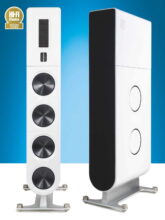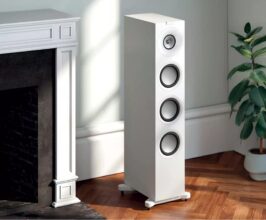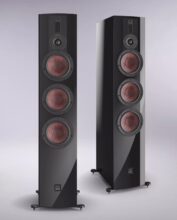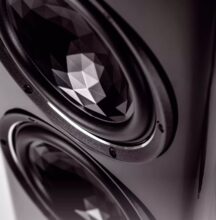Gauder Akustik Capello 100 Double Vision BE Review
An exceptional loudspeaker that isn’t at all outdated—and was originally supposed to take a break for a few years. But an email from Dr. Roland Gauder asking for a callback piqued our curiosity. He mentioned some changes he had made…
by Alexander Rose-Fehling
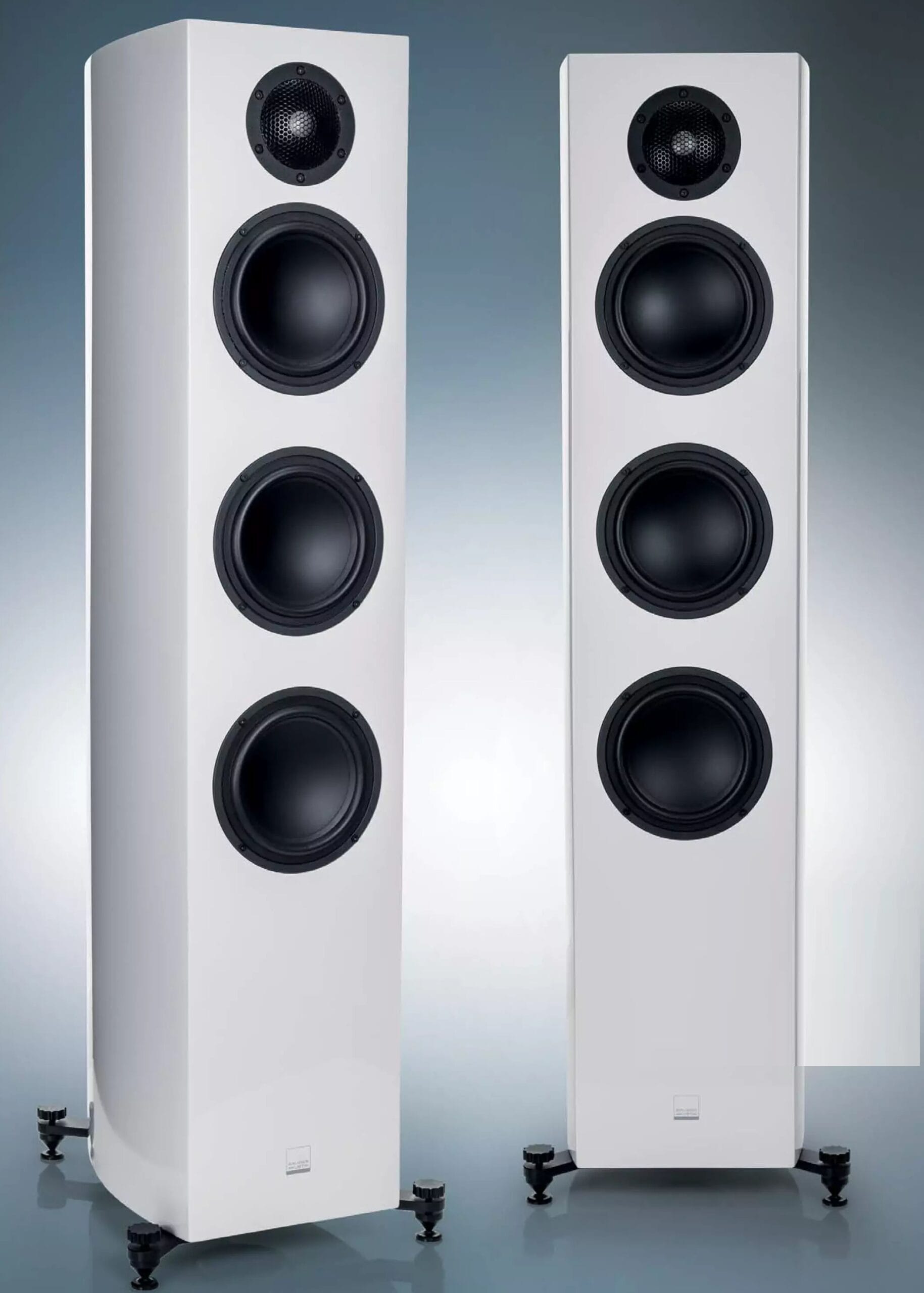
Visually unchanged, this version of the Capello 100 Double Vision | features a beryllium tweeter that truly sets it apart.
We had actually wrapped up our coverage of the Capello 100 (Double Vision) after a test. Yet that email renewed our interest. A quick call to the Swabian loudspeaker designer (“One moment please, he’s busy developing something”) led us to request a test sample. And here we are again with the Capello 100 Double Vision—only this time it’s equipped and tuned differently.
Beryllium and Crossover Tuning
The standard version for USD 18,700 handles frequencies above 3,400 Hz with an aluminum tweeter. In this model, however, beryllium tweeters are used. They have a lighter diaphragm, which in theory allows for higher resolution, as the combination of low moving mass and powerful drive can deliver just that. Theoretically, because this wasn’t actually the main focus of the updates. Instead, the Capello 100 Double Vision BE aimed to be a bit more “relaxed” in terms of attack and accuracy. Specifically, Roland Gauder explains that the tweaks in the high-frequency crossover were meant to create a speaker that remains extremely capable in the bass while never sounding irritating, no matter the music style or volume. He has certainly succeeded.
—–
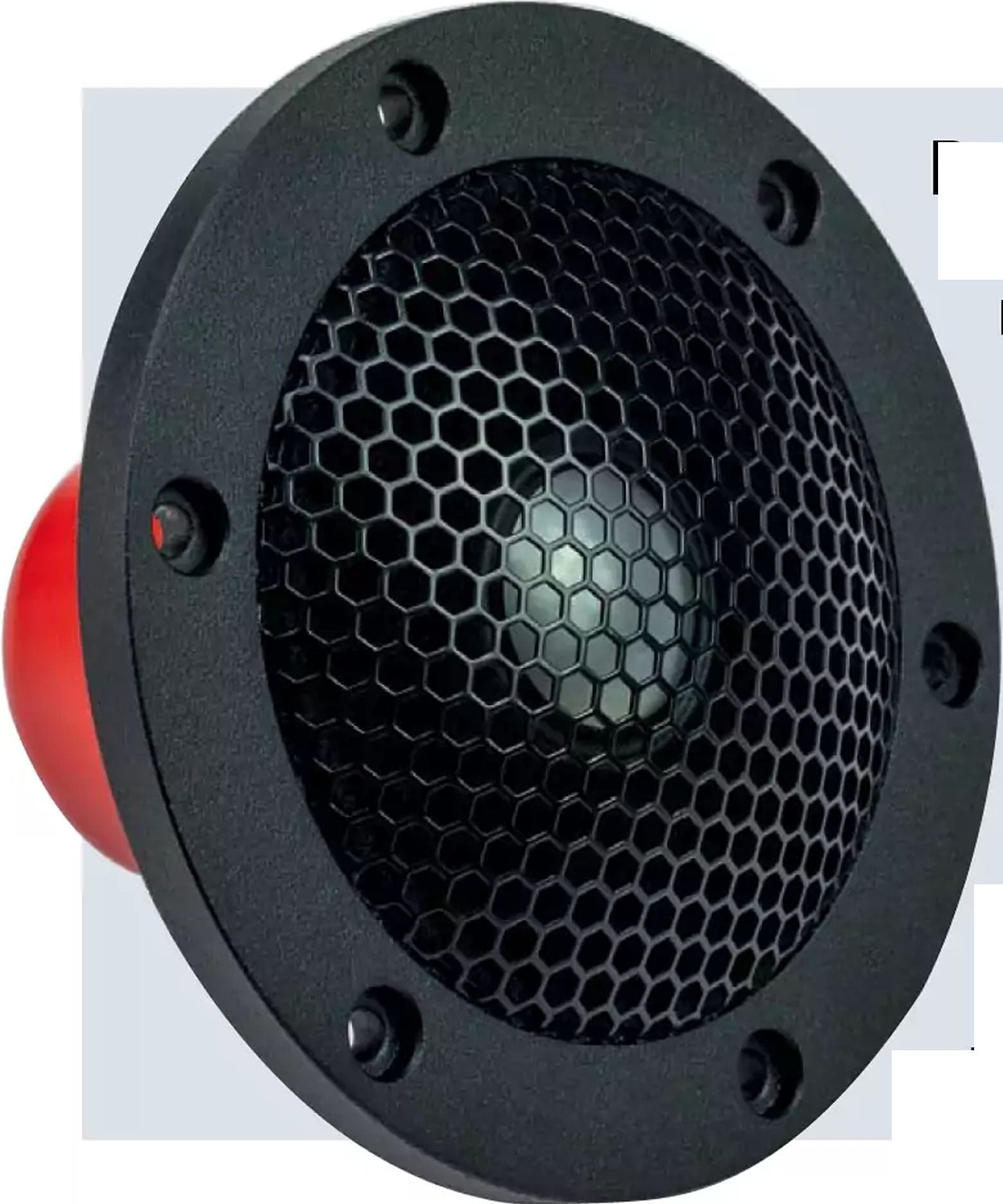
Beryllium Tweeter
Beryllium is mainly found in nature in the minerals beryl and bertrandite. It was discovered by French chemist Louis-Nicolas Vauquelin in 1798. Beryllium compounds and alloys, as well as the pure metal, are very popular—used in aerospace construction, for instance, and in the production of tools and surgical instruments. In HiFi, this chemical element is valued for being both stable and very light.
—-
Modifying crossover components can have wide-ranging effects. Changing the impulse response also shifts the frequency response, which is part of classic analog design. Some things simply cannot coexist: if you soften the attack, you alter imaging. That was exactly the intention here. The impulse behavior is no longer aimed at being as technically perfect as possible, because that inevitably leads to a harsher sound.
Instead, the goal was a sound that stays comfortable for long listening sessions and handles high volumes without fatigue. According to Gauder, this “charming” tuning also brings with it a remarkably spacious depth perspective.
Bass
A detailed description of the Bass Control can be found, but here is a short overview: by default, the Capello series has a triple jumper system called Bass Control. It lets you reduce or boost the 20–150 Hz range by 1.5 dB. If you remove the jumper, the 30–70 Hz range is cut by 4 dB. The optional Bass Extension system offers even more flexibility; these four plug-in modules (available from the dealer) allow you to fine-tune the bass roll-off.
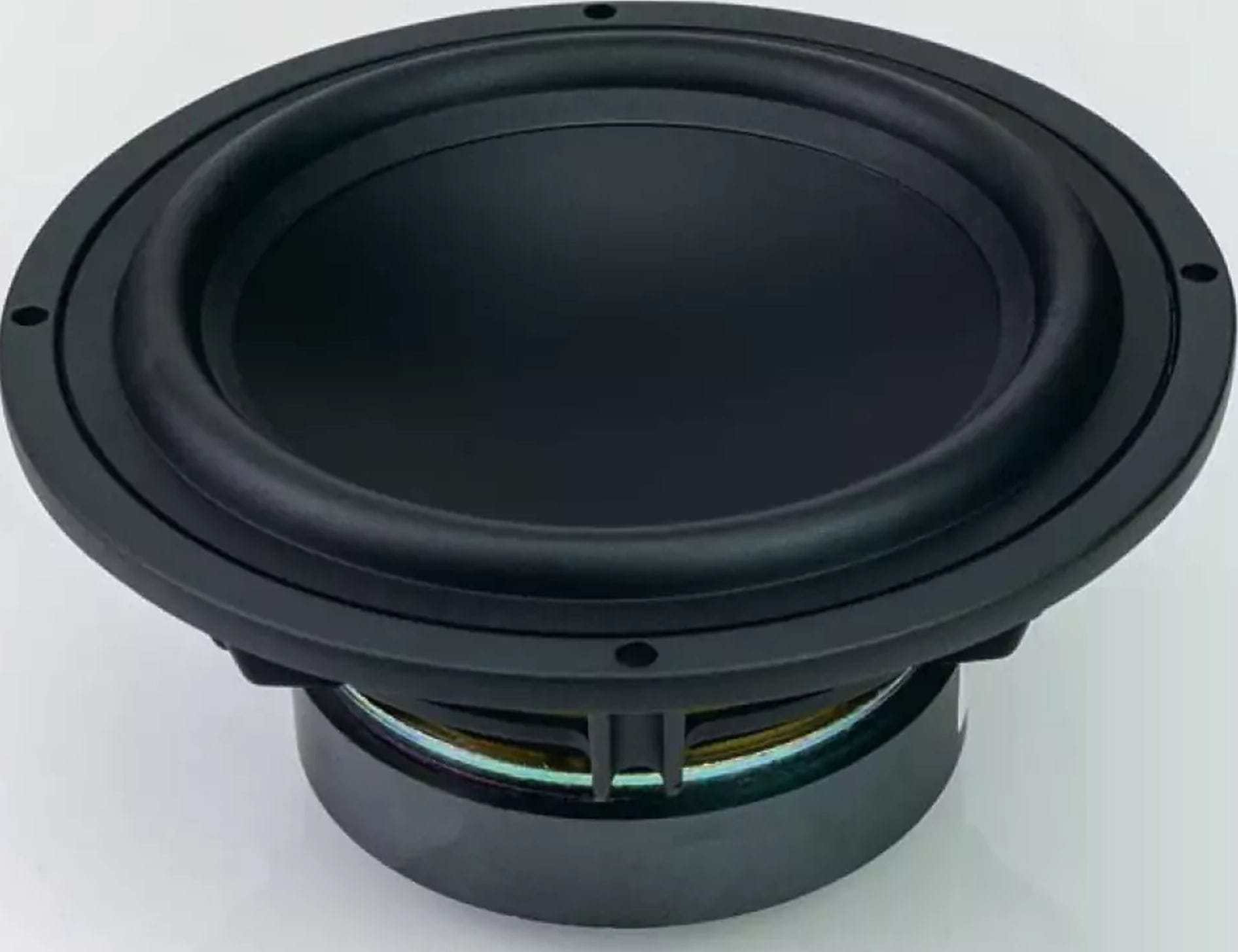
Two 17 cm woofers drive each speaker. The midrange unit looks similar but uses a lighter diaphragm.
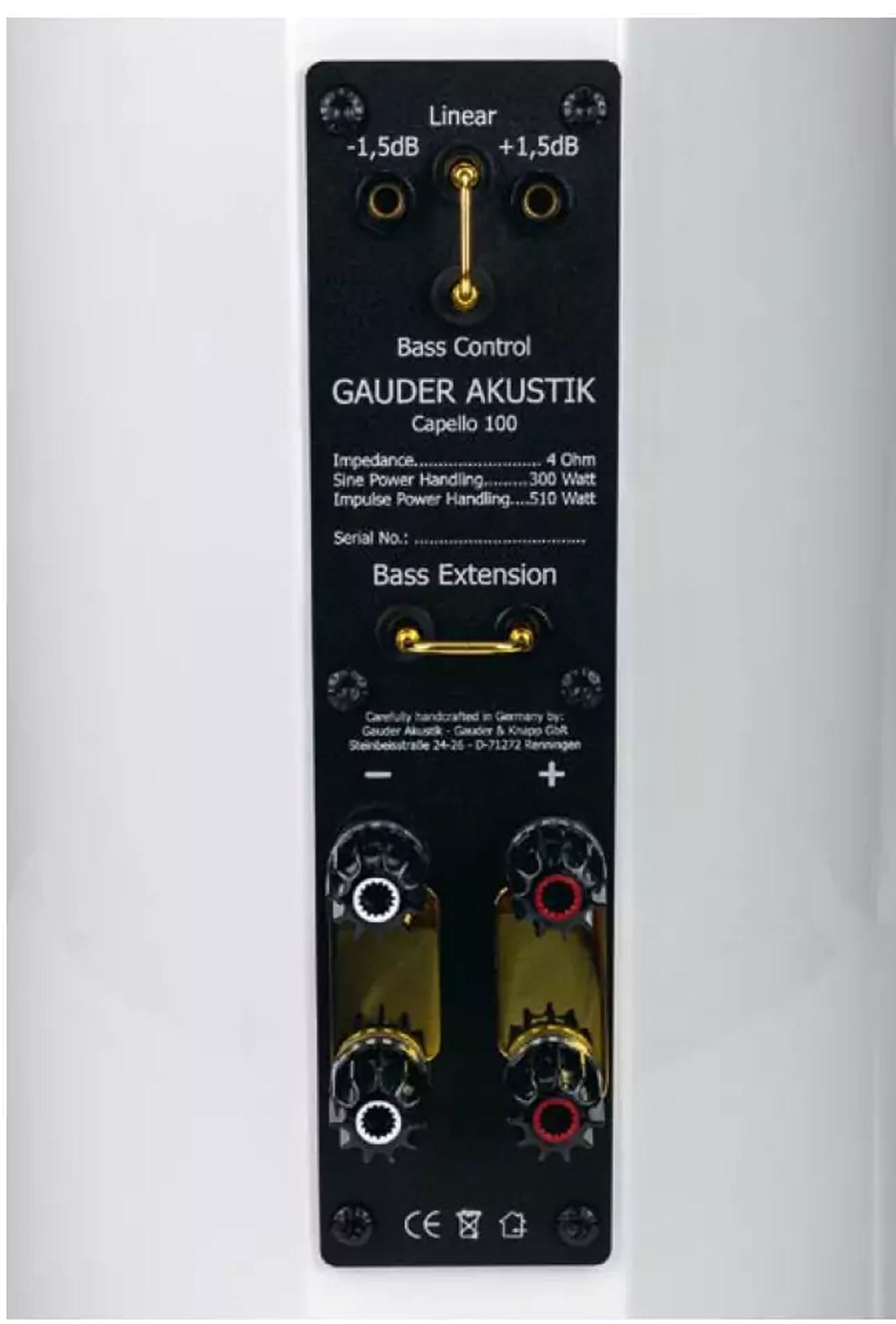
The top section holds the triple jumper for bass adjustments, and below it is the jumper for the optional filters.
We listened to the new Capello 100 without the extension system. After testing a few amplifiers, we settled on the Rega Elicit (p. 56), because it added a bit more clarity. The piece “Mein Alter kömmt, ich kann nicht sterben” (Johann Kuhnau, Complete Sacred Works, cpo) highlighted a key strength of the Capello 100 BE right away: Tobias Hunger sounded natural and relaxed even at loud volumes, set within a deep soundstage that seemed to extend into the adjacent AUDIO listening room. We could crank up “Plush” (Stone Temple Pilots) all the way without discomfort. Nothing was lost in detail, and the bass was wonderfully transparent. The Jacques Loussier Trio (“Kleine Fuge” in G minor) also stood out: rarely have we heard a more impressive sense of depth through bold piano chords than with the Capello 100 BE. The woofers never held anything back, separating bass notes and bass drum with exemplary clarity.
Conclusion: The standard Capello 100 and the new BE version serve different listeners. Those who mostly enjoy pop or jazz might prefer the less expensive model, while fans of classical, rock, and metal may want to invest more in the BE. It combines strong bass impact with a forgiving tonal balance and superb layering. As a result, this upgraded Gauder is consistently pleasant to listen to.
Measurement Diagrams
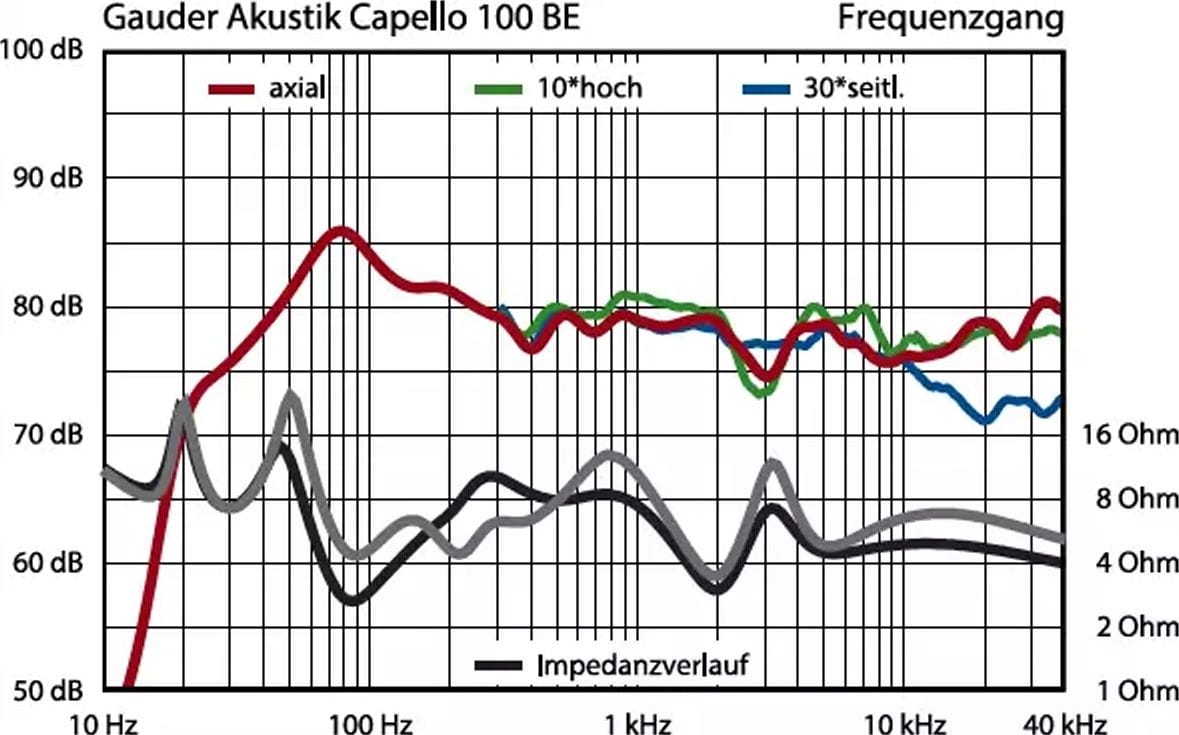
Frequency Response & Impedance Curve
Prominent upper bass, dip in the presence range, changed impedance curve (old: gray / new: black)
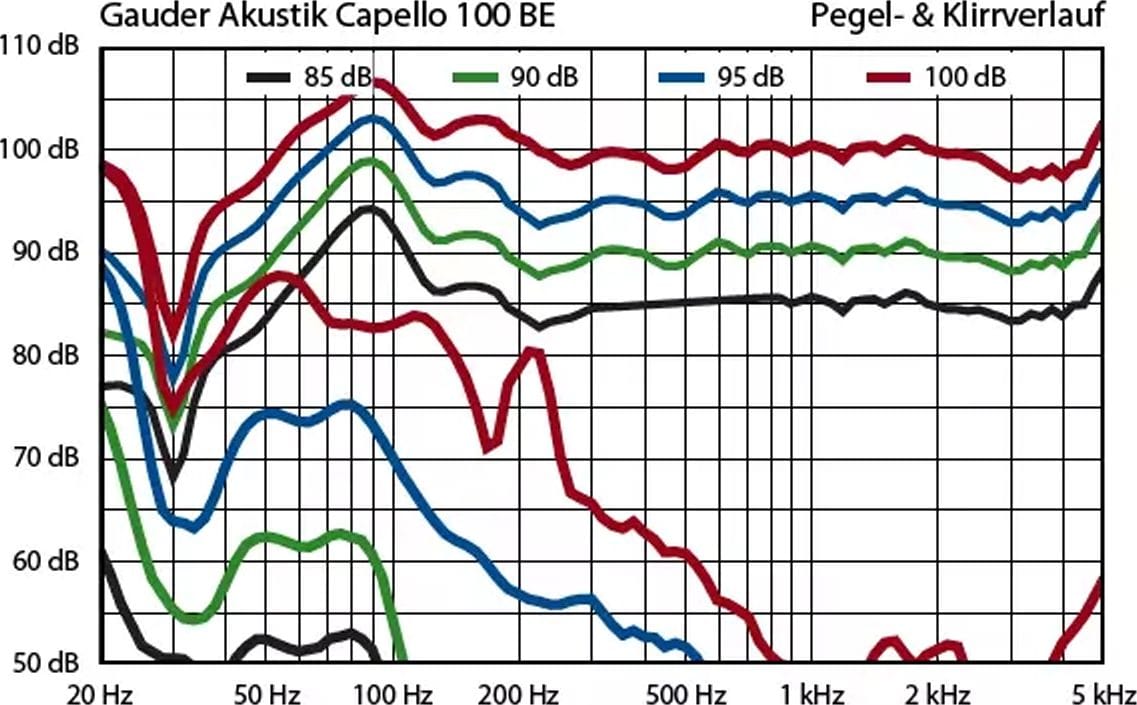
Level & Distortion Curves 85-100 dB SPL
Distortion increases around 250 Hz from 95 dB SPL, while in the bass it remains largely manageable from 90 dB SPL upward
Lower cutoff frequency (-3/-6 dB): 30/22 Hz
Maximum level: 97 dB SPL
Specs
Gauder Akustik Capello 100 Double Vision BE
USD 24,200
Dimensions (W x H x D): 25 x 114 x 42 cm
Weight: 30 kg
Practice and Compatibility
Amplifier Compatibility Diagram
Nominal impedance: 3 Ω (requires a stable-current amp). Amplifiers from 130 W (4 Ω) are ideal.
- Voltage: 22.8 V
- Impedance range (Δ): 3.0 – 10.2 Ω
- Current requirement: 8.4 A
Room Acoustics and Placement
Position them freely; to achieve a balanced treble, angle the speakers slightly toward the listening area.
- Listening distance: 1 m to 5 m
- Distance from walls: 0 m to 1.5 m
- Reverberation time: 0.2 s to 0.8 s
Verdict
Ratings (Original / Approx. 10-Point Scale)
- Naturalness: 14 → ~9.3/10
- Fine Resolution: 14 → ~9.3/10
- Dynamic Reserves: 12 → ~8.0/10
- Bass Quality: 13 → ~8.7/10
- Imaging: 14 → ~9.3/10
Additional Measurements and Verdict
- Measurements: 6 (out of 10) → remains 6/10
- Practical Handling: 7 (out of 10) → remains 7/10
- Build Quality: 9 (out of 10) → remains 9/10
- Sound (“absolute top class”): 67 (out of 70) → ~9.6/10
- Overall Rating: 89 (out of 100) → ~8.9/10
- Price/Performance: high-end



